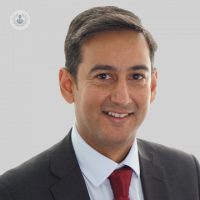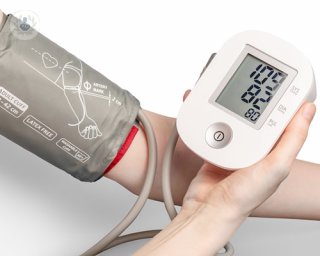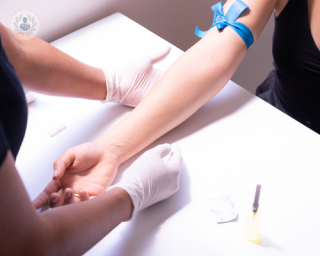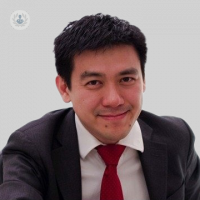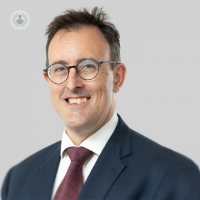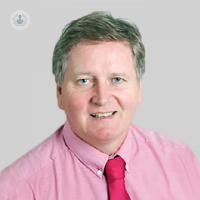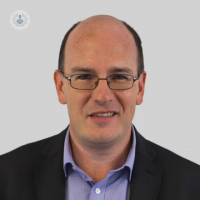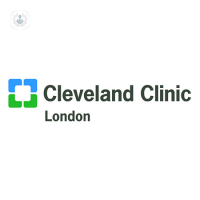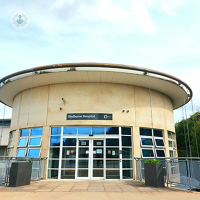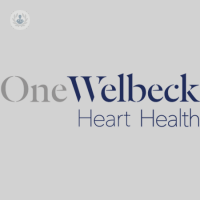Stroke
Mr Paritosh Sharma - Vascular surgery
Created on: 05-07-2018
Updated on: 04-27-2023
Edited by: Conor Dunworth
What is a stroke?
A stroke is the sudden interruption of blood flow to the brain either due to a blood clot or a ruptured blood vessel. The brain cells are deprived of oxygen which causes them to rapidly die. Stroke is a serious, life-threatening medical condition and should be treated as an emergency as earlier action can help reduce the amount of damage done to the brain.

What causes a stroke?
In order to function, the brain needs oxygen and nutrients which are carried by the blood. Blood is brought to the brain via arteries. If the blood flow is cut off due to a clot or a rupture, the brain begins to die.
What are the greatest risk factors for a stroke?
The following are risk factors for having a stroke:
- Poorly managed diabetes
- High cholesterol
- Obesity
- Hypertension (high blood pressure)
- Smoking and excessive alcohol consumption
- Atrial fibrillation (irregular heartbeat)
- Coronary artery disease (narrowing of arteries due to plaque build-up)
- Older age
What are the warning signs of a stroke?
The key symptoms of stroke can be remembered with the acronym ‘F.A.S.T’:
- Face: one side of the face may have drooped down and they are unable to smile.
- Arms: they might not be able to lift both arms, or complain of numbness in one arm.
- Speech: speech can be slurred, or they might not be able to speak at all.
- Time: if any of the above symptoms are witnessed you must call an ambulance and seek immediate medical attention.
What are the different types of strokes?
The existing types of strokes are Transient Ischemic attack (TIA), ischemic stroke or a haemorrhagic stroke.
- Ischemic stroke: blood supply is blocked due to a blood clot disrupting the flow of blood to the brain (thrombotic stroke). Blood flow may also be blocked by fatty deposits and cholesterol (embolic stroke).
- Haemorrhagic stroke: a damaged or weakened blood vessel that supplies the brain ruptures. This is usually due to either high blood pressure or an aneurysm (weakness in the blood vessel wall).
- Transient ischemic attack (TIA): these are known as mini-strokes as blood supply to the brain is only stopped temporarily. They can be a warning sign of an eventual major stroke and should be treated urgently.
What are the symptoms of a stroke?
In addition to the previously mentioned warning signs, other symptoms of strokes include:
- Difficulty swallowing (dysphagia)
- Difficulty understanding what other people are saying
- Paralysis of one side of the body
- Blurred vision
- Confusion
- Loss of balance
- A sudden, severe headache
- Loss of consciousness
These symptoms may occur alone or as a combination. Symptoms are determined by where the stroke occurs.
Where in the brain can a stroke occur?
There are four parts of the brain by which the location of a stroke is classified: the right hemisphere, the left hemisphere, the cerebellum, and the brain stem. Depending on the location of the stroke, the symptoms will differ.
A stroke occurring in the right hemisphere will impact one’s ability to judge distance, short term memory loss, behaviour, and cause complete or partial loss of control of the left side of the body.
If it happens in the left hemisphere, speech and communication can be affected along with loss of control over the right side of the body and memory loss.
A stroke affecting the cerebellum can cause many changes such as dizziness, nausea, loss of coordination, loss of balance and slurred speech. If the brain stem is impacted them it can result in complete paralysis, coma, double vision, dysphagia and death.

What other conditions can be mistaken for a stroke?
A lot of symptoms of strokes are signs of other medical conditions, such as:
- Seizures
- Migraines
- Dizziness
- Facial tightness
- Tingling nerve sensations
- Low or high blood sugar levels
- Brain tumour
Are strokes hereditary?
Genetics may put people at higher risk of experiencing a stroke. Factors which may contribute to your risk could be underlying conditions such as inherited predisposition to high blood pressure or diabetes, for example.
Can a stroke be prevented?
As with other pathologies, the prevention of stroke can be achieved by eliminating everyday life risk factors such as smoking, excessive alcohol consumption, high blood pressure, diabetes, high cholesterol levels, obesity and certain diseases such as atrial fibrillation and coronary artery disease.
What determines the effects of a stroke?
The effect a stroke can have on someone is influenced by many factors. These are:
- The type of stroke
- Where it occurred
- The part of the brain that has been damaged
- How much of the brain has been damaged
- The person’s health and activity level prior to the stroke
Every stroke is different and each person will have different problems to overcome if they suffer a stroke. In some cases, the effects will be minimal while in others, the person will have permanent and serious disabilities following it.
What is the treatment for a stroke?
Treatment for a stroke will depend on the type of stroke suffered and which part of the brain was affected. Medications can be administered that help dissolve blood clots and reduce cholesterol and blood pressure. Surgery to remove blood clots might also be recommended or surgery to address brain swelling and cerebral bleeding resulting from a haemorrhagic stroke.
What specialist treats strokes?
A multi-disciplinary team of doctors and nurses specialising in stroke care will work quickly to diagnose and provide acute care. Additionally, patients can avail of help from other medical specialists such as physical therapists, occupational therapists, and speech and language therapists for long-term recovery support.
Can your brain heal after a stroke?
Depending on where the stroke occurs and how much of the brain is damaged will determine a person’s ability to recover. Previously it was believed that the damaged parts if the brain would be permanently damaged, but it has been proven that the brain can regain function following a stroke. Healthy parts of the brain can adapt and take over from the damaged parts. The sooner a patient starts rehabilitation following a stroke, the better the chances of their brain healing.
